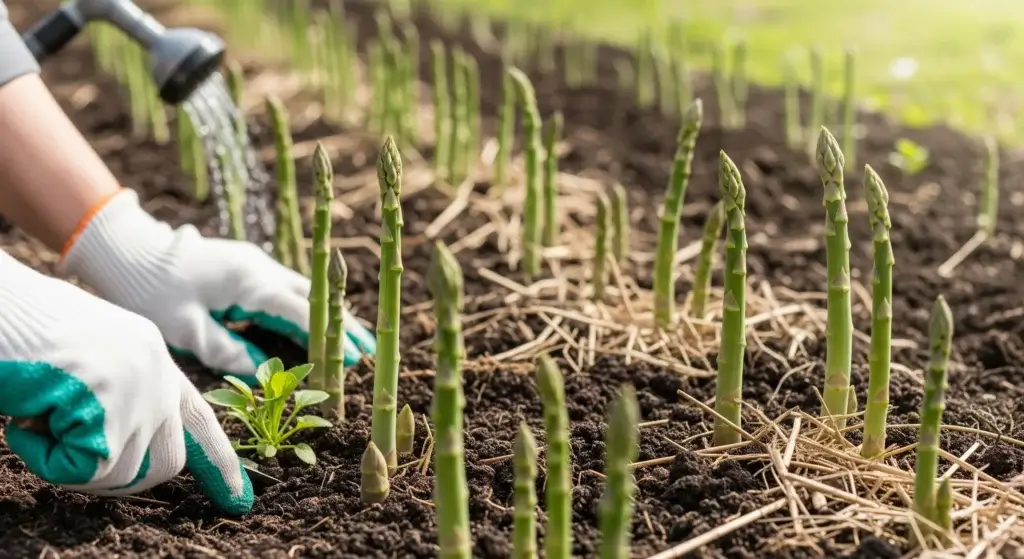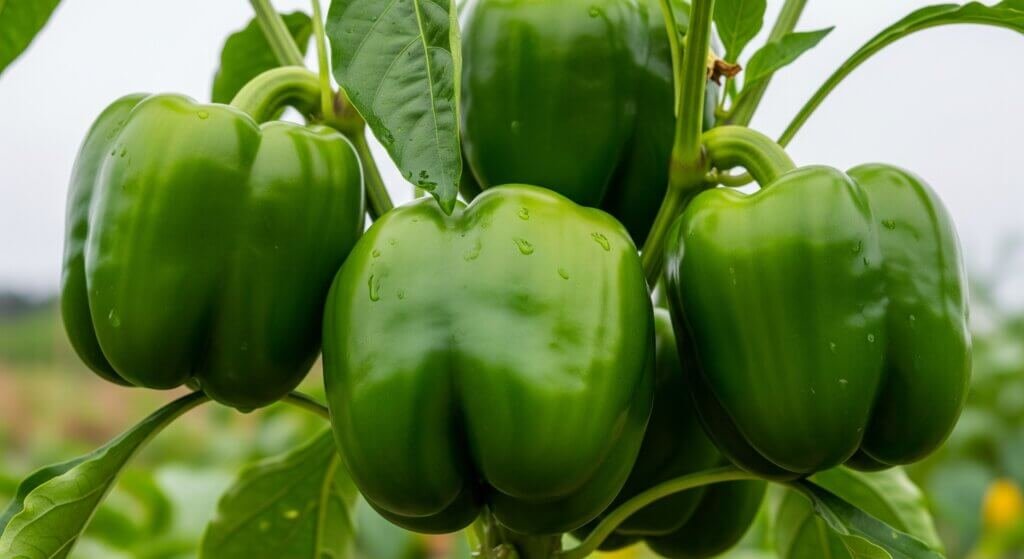
Pepper plants, whether you’re growing sweet bell peppers or fiery chilies, thrive when given the right nutrients.
Among these, phosphorus plays a critical role in their growth and development.
However, phosphorus deficiency is a common issue that can severely affect your pepper plants’ health and productivity.
In this blog, we’ll explore the causes, symptoms, prevention, and treatment of phosphorus deficiency in pepper plants.
The Role of Phosphorus in Pepper Plants
Phosphorus is an essential nutrient that plays a key role in the health and growth of pepper plants.
Here’s why it’s so important:
Supports root growth
Phosphorus is vital for the development of strong, healthy roots, especially in young pepper plants.
Healthy roots help the plant absorb water and nutrients more effectively, which is the foundation for healthy growth.
Encourages flowering and fruit production
Phosphorus helps peppers produce flowers and fruit, which directly affects their yield.
Without enough phosphorus, pepper plants may struggle to bloom, leading to fewer fruits.
Boosts energy use
Phosphorus is a critical part of adenosine triphosphate (ATP), the molecule that carries energy within plants.
This energy is necessary for vital processes like photosynthesis, growth, and reproduction, helping the plant thrive.
Improves disease resistance
A pepper plant with enough phosphorus is more likely to withstand diseases and environmental stress.
This makes phosphorus a key nutrient for ensuring strong, healthy plants.

Identifying Phosphorus Deficiency in Pepper Plants
If your pepper plants are showing signs of phosphorus deficiency, catching it early is crucial to avoid serious damage.
Here are some common symptoms to look for:
Stunted growth
When there isn’t enough phosphorus, your pepper plants will grow more slowly, becoming smaller and weaker than healthy plants.
Dark green or bluish-green leaves
The leaves might appear darker than usual, sometimes taking on a bluish-green tint.
This can be a sign of stress due to phosphorus shortage.
Purplish or reddish leaves
Older leaves, stems, and petioles (the stalks that hold the leaves) can develop a purplish or reddish color.
This is particularly noticeable in soils lacking phosphorus.
Less flowering and fruit production
Phosphorus deficiency can result in fewer flowers and fruits, or even none at all.
Without enough phosphorus, plants struggle to produce blooms and fruits.
Small, thin leaves
When phosphorus is lacking, plants often grow smaller, thinner leaves that appear weak and lack the usual vitality.
Necrosis (tissue death)
Older leaves might develop brown spots or die off prematurely.
This tissue death, called necrosis, is a serious sign of phosphorus deficiency.

Causes of Phosphorus Deficiency
Understanding the reasons behind phosphorus deficiency can help you tackle the issue effectively.
Here are some common causes:
Soil pH
Phosphorus is best absorbed by plants in soils with a pH level between 6.0 and 7.5.
If the soil is too acidic (low pH) or too alkaline (high pH), phosphorus becomes less available to the plants, leading to deficiencies.
Cold soil temperatures
When the soil is cold, plants struggle to take up phosphorus, even if it’s present in sufficient amounts.
This is particularly challenging for young pepper plants early in the growing season when temperatures are still low.
Poor soil structure
If the soil is compacted or lacks proper aeration, it can restrict root growth and hinder the plant’s ability to absorb nutrients, including phosphorus.
Healthy soil structure is vital for nutrient uptake.
Low phosphorus levels
Some soils naturally contain low levels of phosphorus, and continuous planting without adding phosphorus can deplete the soil over time.
This lack of replenishment can lead to nutrient deficiencies in your plants.
Root damage
Damage to the roots caused by pests, diseases, or improper transplanting can significantly reduce the plant’s ability to absorb phosphorus.
Healthy roots are essential for nutrient uptake.

Preventing Phosphorus Deficiency
Prevention is the best approach when it comes to ensuring your pepper plants stay healthy.
Here are some simple steps to make sure they get enough phosphorus:
Soil testing
Regularly test your soil to check the levels of phosphorus and the pH.
This helps you make informed decisions about adding amendments or fertilizers, ensuring the soil is balanced and nutrient-rich.
Soil amendments
Adding organic matter like compost improves soil structure and provides a steady source of phosphorus.
Here are some other amendments you can use:
- Bone meal: A natural source of phosphorus that breaks down slowly, giving long-lasting benefits.
- Rock phosphate: Ideal for acidic soils, this slowly releases phosphorus, improving availability over time.
Maintain optimal soil pH
Keep the soil pH between 6.0 and 7.5 for the best phosphorus absorption.
If the pH is too low (acidic), you can raise it by adding lime.
If it’s too high (alkaline), sulfur can help lower it.
Warm the soil
If you’re planting early in the season, use black plastic mulch to warm the soil.
Warmer soil temperatures help improve phosphorus uptake, especially when it’s cooler outside.
Proper watering
Make sure you’re watering your plants correctly—not too much, and not too little.
Overwatering or underwatering can affect the health of the roots and the plant’s ability to absorb nutrients like phosphorus.

Treating Phosphorus Deficiency
If you notice your pepper plants are showing signs of phosphorus deficiency, it’s important to address the issue quickly.
Here’s how you can treat it:
Phosphorus fertilizers
Using the right fertilizers can provide your plants with the phosphorus they need.
Here are some options:
Water-soluble fertilizers
These give your plants an immediate phosphorus boost.
Look for fertilizers with a high middle number in the NPK ratio, such as 10-30-10.
The middle number represents phosphorus content.
Granular fertilizers
These fertilizers release phosphorus gradually, providing long-term benefits for your soil and plants.
Foliar feeding
Applying a phosphorus-rich liquid fertilizer directly to the leaves can give your plants a quick fix, allowing them to absorb nutrients through the foliage.
Adjusting soil pH
If the soil pH is outside the ideal range for phosphorus absorption (between 6.0 and 7.5), you’ll need to adjust it.
Use agricultural lime to raise the pH if it’s too low (acidic), or sulfur to lower it if it’s too high (alkaline).
Make adjustments gradually and follow soil test results for the best outcome.

Final Thoughts
Phosphorus deficiency can significantly impact the health and productivity of your pepper plants, but it’s a manageable issue with the right approach.
By understanding the role of phosphorus, identifying deficiency symptoms, and taking preventative or corrective measures, you can ensure your peppers thrive throughout the growing season.
Remember, healthy soil leads to healthy plants, so regular monitoring and care are key.



